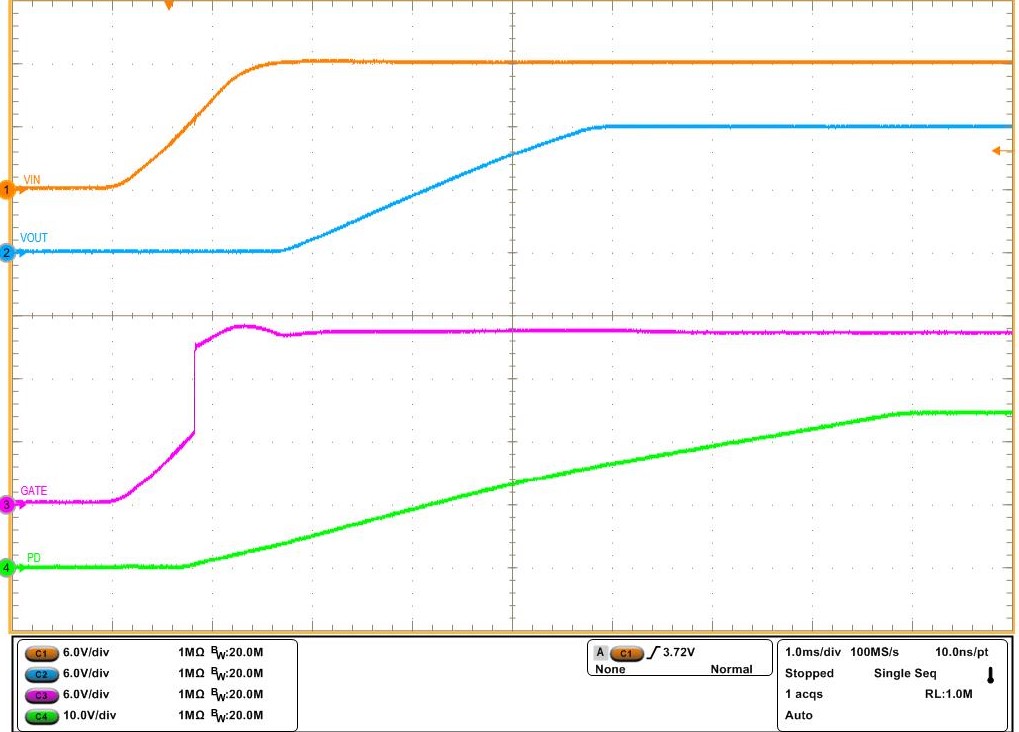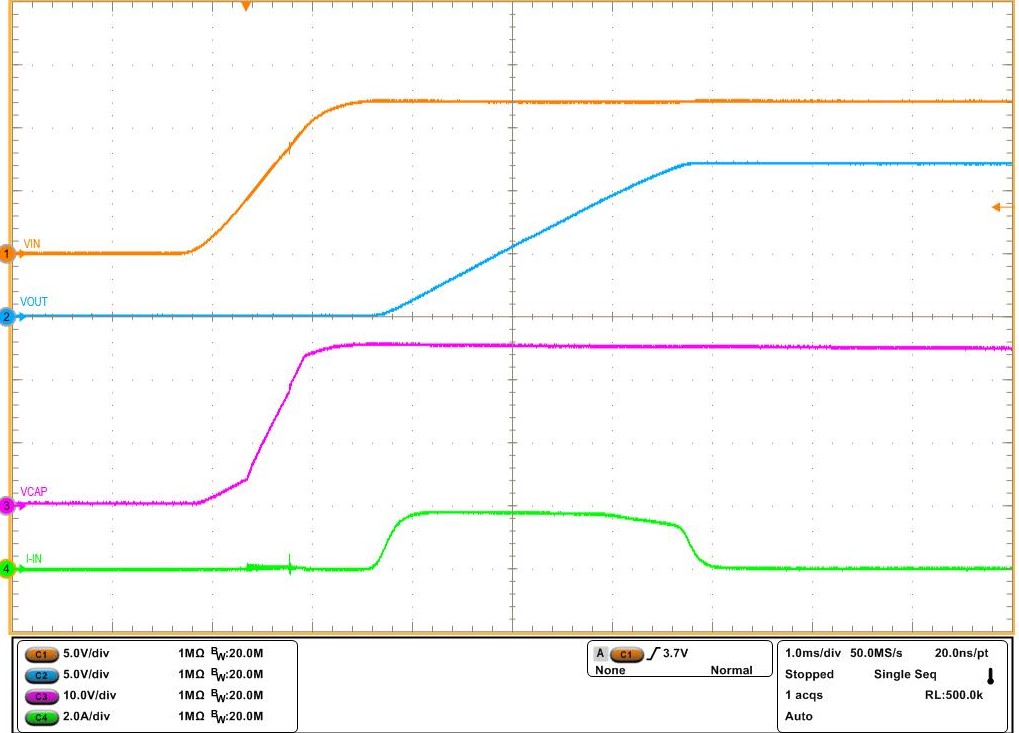SNOU186 September 2021 LM74720-Q1 , LM74722-Q1
- Trademarks
- 1Introduction
-
2Description
- 2.1 Input Power and Load (J1/J5 and J2/J6, J8/J12 and J9/J13):
- 2.2 Enable Control (J4 and J11):
- 2.3 Two Back-to-Back Connected MOSFETs (Q1/Q3-Q2/Q4 and M1/M3-M2/M4):
- 2.4 Output Slew Rate Control (R3 and C4, R10 and C13):
- 2.5 Output Schottky Diode (D3, D8) and LED Indication (D4, D10) :
- 2.6 TVS Selection for 12-V Battery Protection:
- 2.7 TVS Selection for 24-V Battery Protection:
- 2.8 Test Points:
- 3Schematic
- 4Test Equipment Requirements
- 5Test Setup and Results
- 6Board Layout and Bill of Materials
5.2 Power Up
To verify the startup behavior, connect the oscilloscope to the evaluation module:
- Channel 1 - Input Voltage (Test Point Label VIN)
- Channel 2 - Output Voltage (Test Point Label VOUT)
- Channel 3 - GATE Voltage (Test Point Label GATE)
- Channel 4 - PD Voltage (Test Point Label PD)
 Figure 5-2 Power Up: GATE and PD
Figure 5-2 Power Up: GATE and PD Figure 5-3 Power Up: Charge Pump and Inrush Current
Figure 5-3 Power Up: Charge Pump and Inrush CurrentAdditional startup information is captured in Figure 5-3. Channel 3 captures the internal boost converter output voltage VCAP pin during startup.